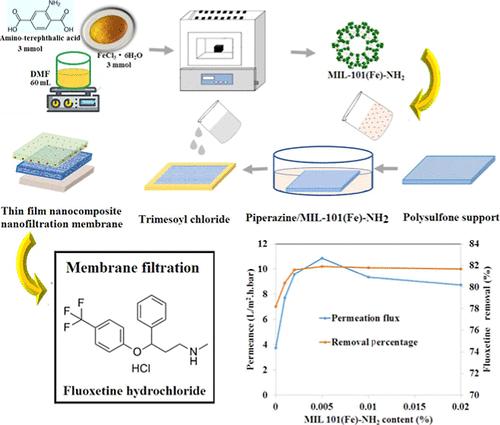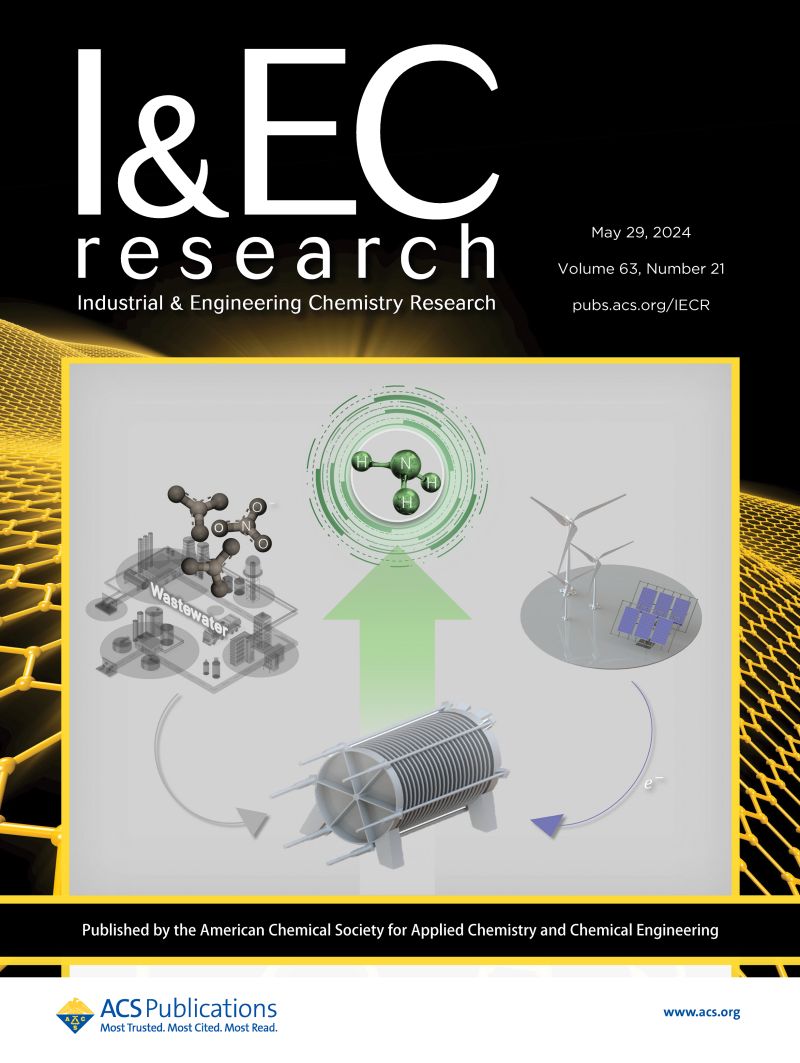MIL-101(Fe)- and MIL-101(Fe)-NH2-Loaded Thin Film Nanofiltration Membranes for the Removal of Fluoxetine Hydrochloride from Pharmaceutical Wastewater
IF 3.8
3区 工程技术
Q2 ENGINEERING, CHEMICAL
引用次数: 0
Abstract
In the present study, MIL-101(Fe) and MIL-101(Fe)-NH2 metal–organic frameworks (MOFs) have been loaded into the piperazine aqueous phase (MAq membranes) and trimesoyl chloride organic phase (MOr membranes) of the interfacial polymerization (IP) solutions to fabricate thin film nanocomposite (TFN) membranes. The performance of the bare thin film composite (TFC) and TFN nanofiltration membranes was investigated for the removal of the antidepressant fluoxetine hydrochloride (FLX) from aqueous solutions. The performance of the optimized TFN nanofiltration membrane was evaluated for the removal of sertraline hydrochloride, paroxetine hydrochloride, and nortriptyline hydrochloride antidepressants from water. The results showed that the MOr membrane loaded with 0.005 MIL-101(Fe)-NH2 MOFs achieved the highest FLX removal percentage of 84.7%, with a permeance of 5.08 L m–2 h–1 bar–1. The water permeance, FLX, chemical oxygen demand (COD), and total organic carbon (TOC) removal efficiencies of the 0.005 wt % MIL-101(Fe)-NH2 MOF-loaded MAq membrane were 9.16 L m–2 h–1 bar–1, 77.2%, 98.1%, and 99.2%, respectively. The removal efficiency of the other antidepressants using the 0.005 wt % MIL-101(Fe)-NH2 MOF-loaded MAq membrane was in the following order: sertraline hydrochloride (75.8%) > nortriptyline hydrochloride (73.1%) > paroxetine hydrochloride (71.5%). These results demonstrate that the loading of a low concentration of negatively charged MOFs into the aqueous phase of TFN membranes can significantly improve their membrane performance for the removal of FLX from pharmaceutical wastewater.

求助全文
约1分钟内获得全文
求助全文
来源期刊

Industrial & Engineering Chemistry Research
工程技术-工程:化工
CiteScore
7.40
自引率
7.10%
发文量
1467
审稿时长
2.8 months
期刊介绍:
ndustrial & Engineering Chemistry, with variations in title and format, has been published since 1909 by the American Chemical Society. Industrial & Engineering Chemistry Research is a weekly publication that reports industrial and academic research in the broad fields of applied chemistry and chemical engineering with special focus on fundamentals, processes, and products.
 求助内容:
求助内容: 应助结果提醒方式:
应助结果提醒方式:


